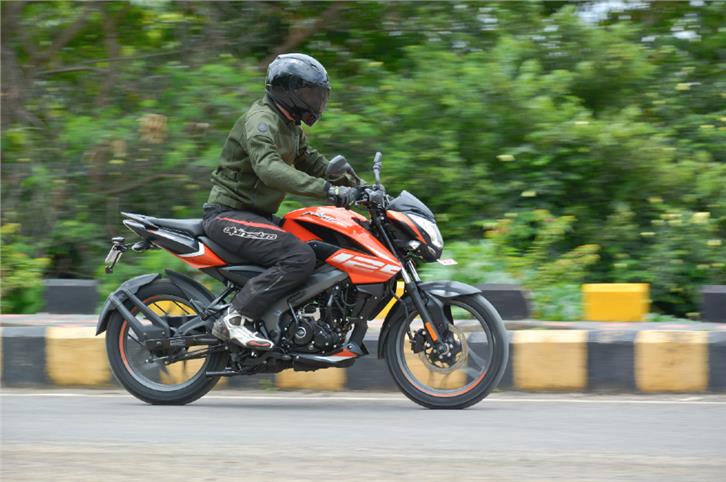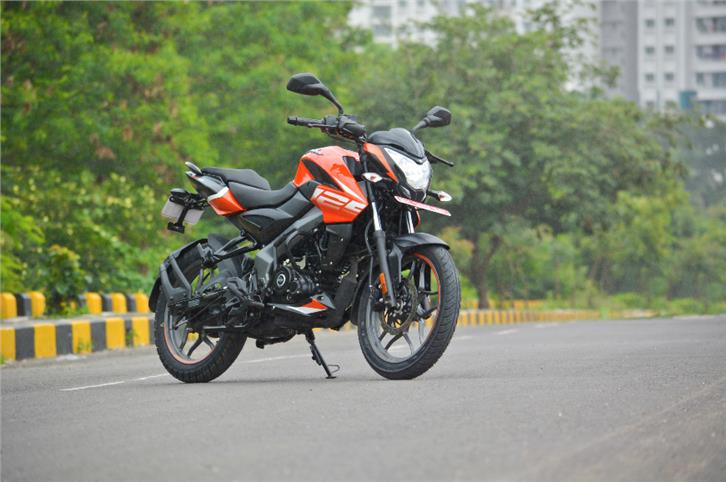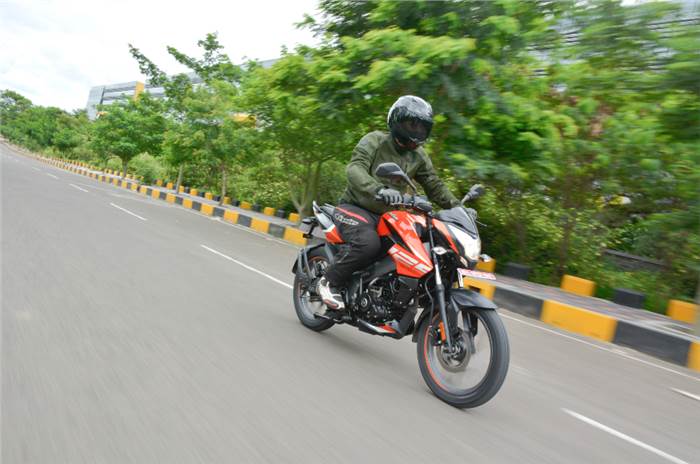Bajaj Pulsar NS125 review, road test
Can the smallest NS yet deliver a sporty riding experience at under Rs 1 lakh?
Published on Jul 20, 2021 04:59:00 PM
68,334 Views
Follow us on

The engine is a rather basic unit on paper. It’s a four-valve air-cooled motor and one that’s a bit of an anomaly in the BS6 era because it doesn’t feature fuel-injection. Instead, it employs Bajaj’s unique e-carb technology. The final result is output figures of 12hp at 8,500rpm and 11Nm at 7,000rpm. For reference, this is slightly higher than the regular Pulsar 125’s figures of 11.8hp and 10.8Nm, but still slightly off the KTM pair’s output of 15hp and 12Nm. In the real world, though, the NS125 feels sprightly enough.

The motor is tractable right off idle, making it rather usable in the city. From there on, power builds nicely up to around 9,000rpm, beyond which it neither pulls very hard nor sounds very pleasant. Nevertheless, up to that point, there’s a fair amount of pulling power available, keeping the displacement figure in mind. It’s only once you approach the triple-digit mark that the NS begins to feel stretched. The data backs this up, because the bike gets to 80kph in a respectable 10.52sec, but then requires another 13 seconds to make it to the 100kph mark! With patience and a light enough rider, you’ll get close to the limiter in top gear and see as high as 115kph on the speedometer, by which point the engine feels and sounds terribly unhappy with what you’re asking of it.
Clutch feel is light and natural, and gear ratios are well chosen, but there’s no getting around the fact that there are only five of them available. They’re tall enough that gear changes aren’t frustratingly frequent in the city, yet short enough that the NS accelerates reasonably quickly and feels nicely tractable at urban speeds. What they can’t provide, though, is a relaxed highway cruising experience. The motor’s harsh top-end, combined with the absence of a sixth cog, means that you’ll want to cap your cruising speeds at about 80 to 85kph, lack of pulling power notwithstanding.
Another by-product of this phenomenon is the slightly low highway fuel efficiency. Having to sit at high RPMs means the motor empties its fuel tank quicker, returning only just over 50kpl on the highway. Things are a lot better in the city, where the NS125 delivers a near-60kpl efficiency figure that’s more in-line with its displacement. With a 12-litre fuel tank, you’re still looking at a good 500km of highway use before alarm bells start going off, and the NS should comfortably have you covered for a week of commuting on each fill-up.
As for that e-carb technology, its biggest praise is that you can barely feel it’s there. For all intents and purposes, the NS125 feels like a fuel-injected motorcycle, and the only sign that there’s anything out of the ordinary, is the motor cranking for slightly longer than usual during cold starts.
Copyright (c) Autocar India. All rights reserved.





Comments
Member Login
Personal Details
No comments yet. Be the first to comment.